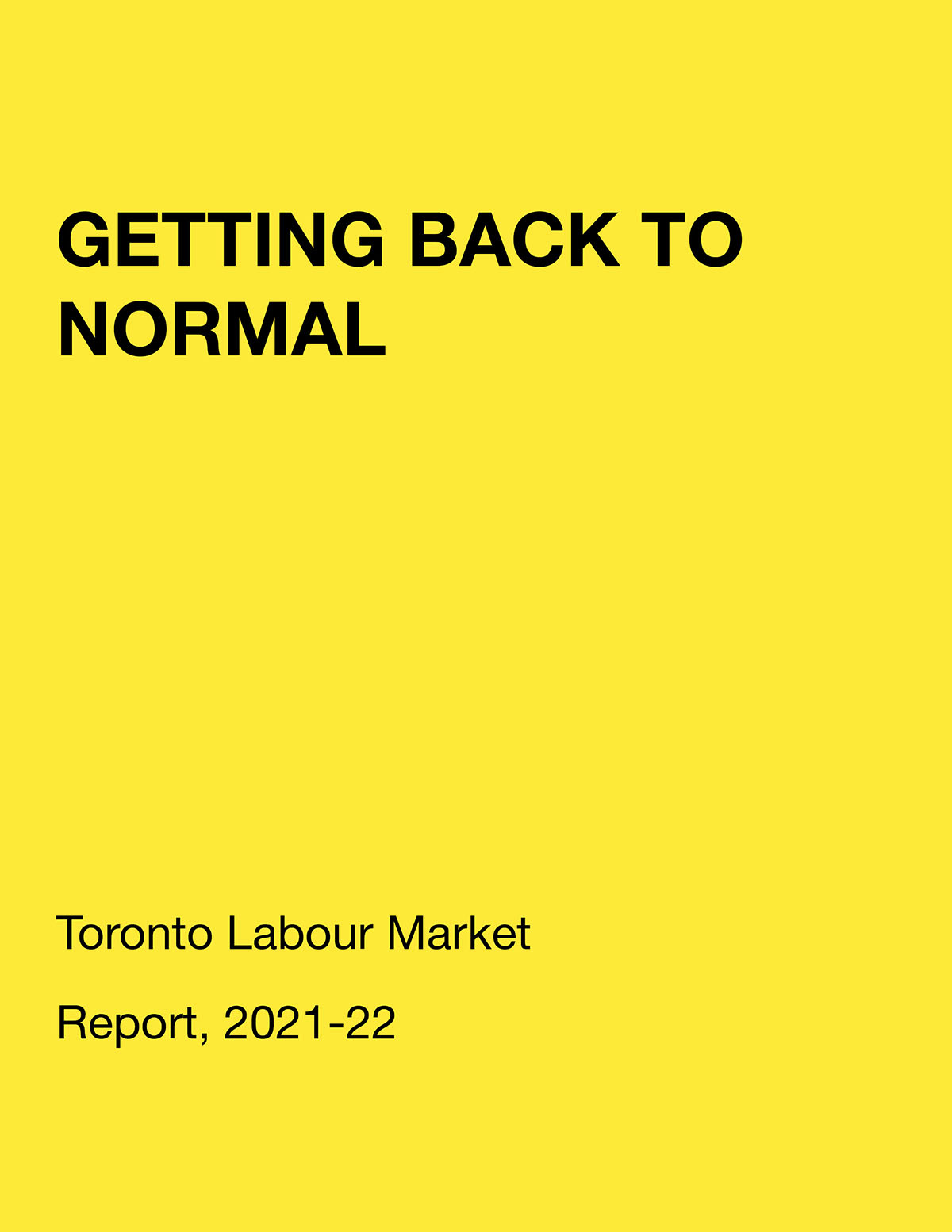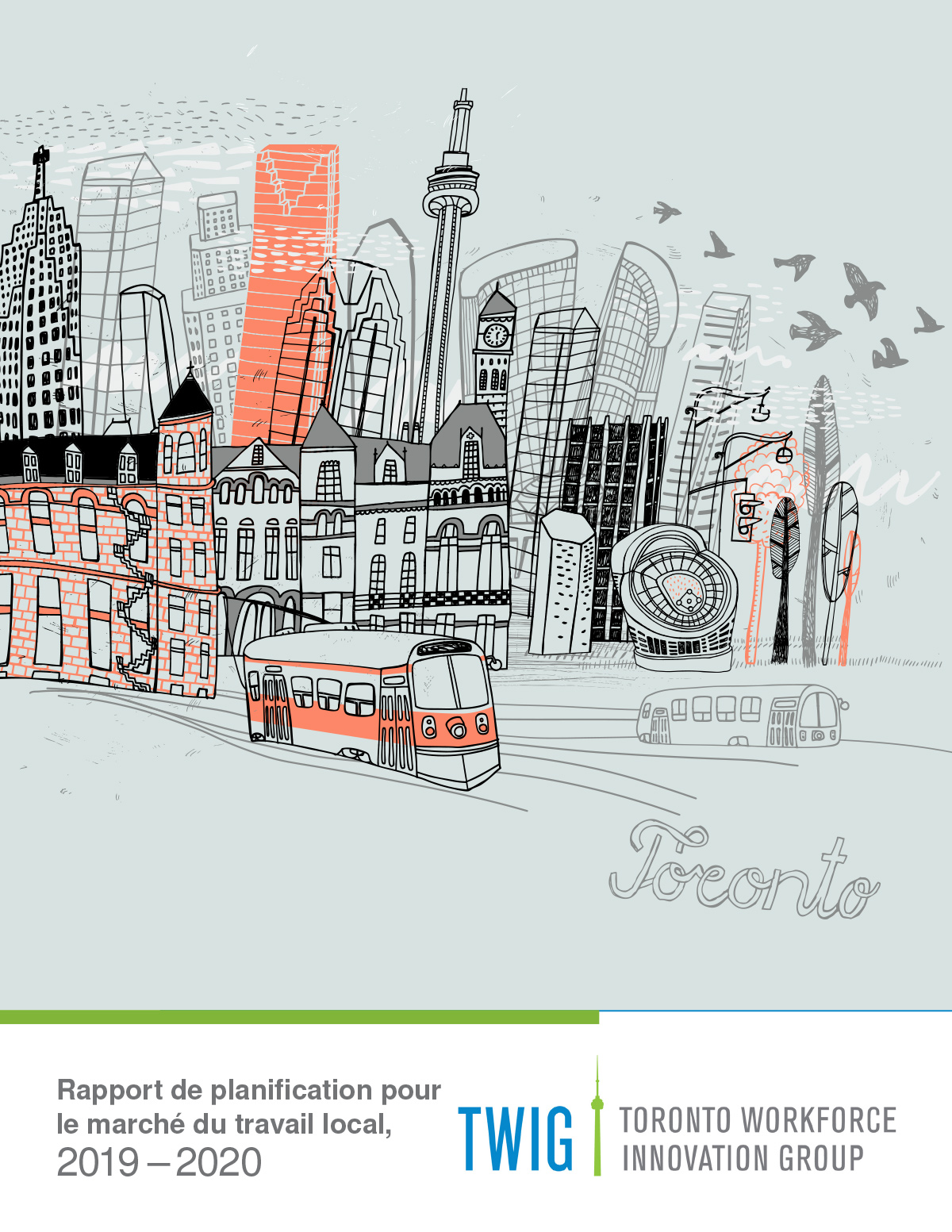Reports
The Workforce Behind the Premiums

In July of last year, Toronto experienced severe torrential rains that tested the city's infrastructure, causing widespread flooding and damage. This incident served as a stark reminder of the insurance industry's vital role in urban resilience, acting not only as a financial safety net but also as a crucial support in times of disaster. The event resulted in CA$940 million in insured losses, highlighting the importance of comprehensive climate risk coverage. Our report, "The Workforce Behind the Premiums: Insurance Industry Labour Market Dynamics in Toronto," builds on this backdrop to detail the insurance industry's role in the local economy, focusing on its influence on employment and business operations. It offers an extensive review of key segments within the industry- Insurance Carriers and Agencies and Brokerages and the prevailing job roles. As a valuable tool for policymakers, industry leaders, professionals, and career counselors this report aims to provide insights that can help navigate the complexities of the insurance industries in Toronto.
Report in PDF Format
Missing Pieces
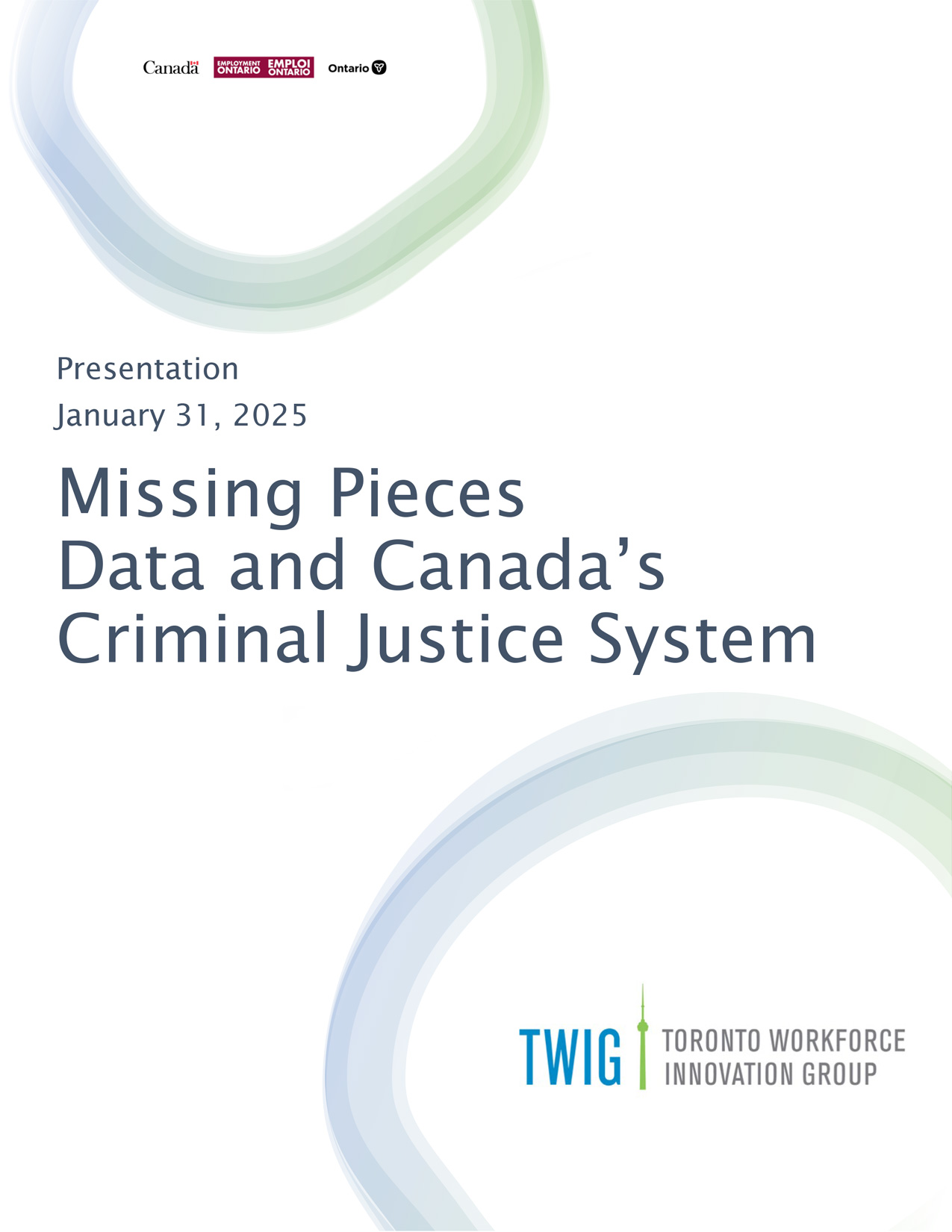
Late last year, TWIG was asked by several organizations to examine data related to persons with criminal records. What we quickly discovered was a significant paucity of data—only small snapshots, secondary sources, and fragmented statistics were available to capture the full scope of challenges in Canada’s criminal justice system.
Labour Market Insight 2025
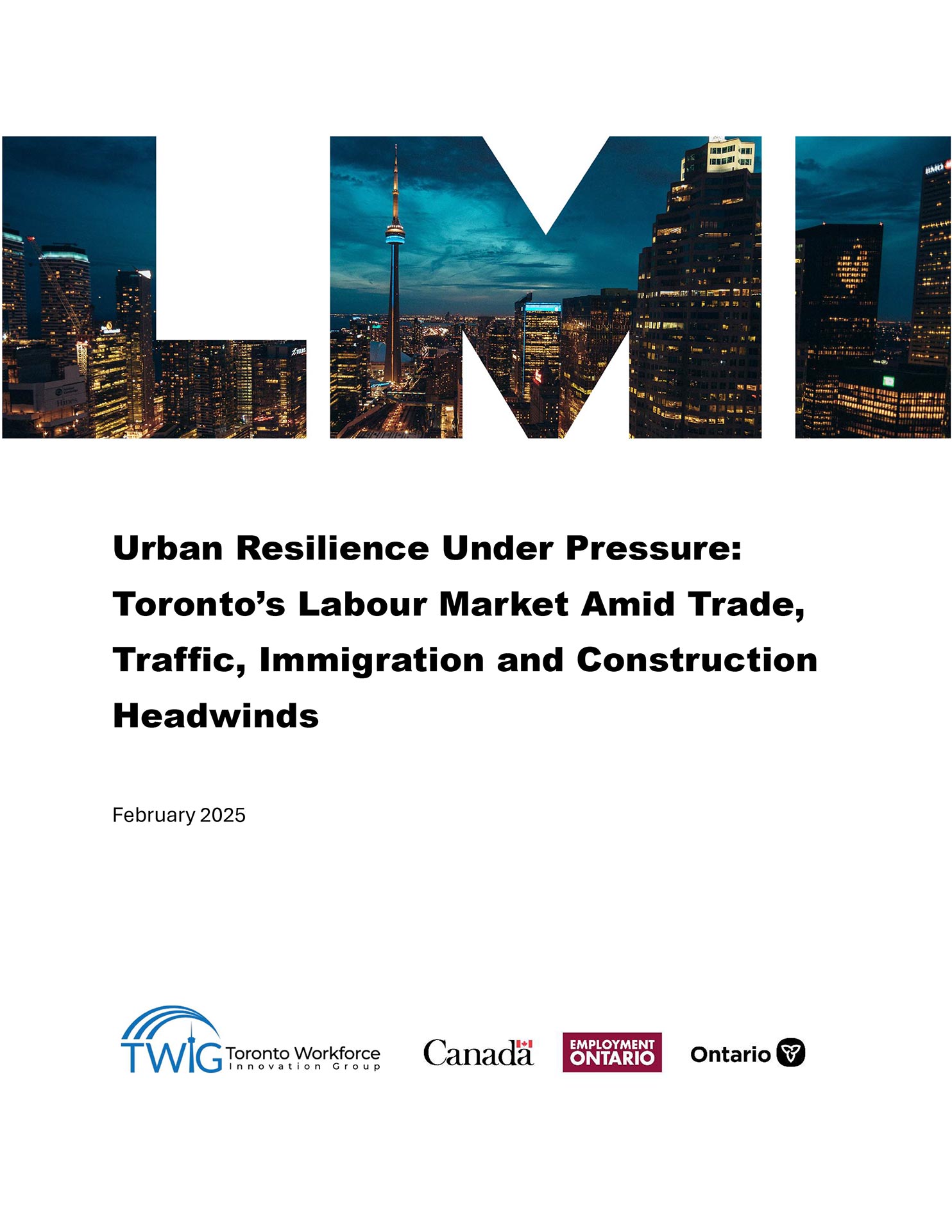
The 2025 Local Labour Market Plan is intended to be a guiding map for workforce strategic actions needed in Toronto. The annual review is a process that starts with a review of the latest labour market trends observed internationally, nationally, provincially, and regionally. It continues with a set of community conversations in which stakeholders are invited to express their opinions about the progress of the regional labour market and the needed initiatives for correcting the challenges or taking advantage of opportunities.
Report in PDF Format
Workforce Diversity Profile
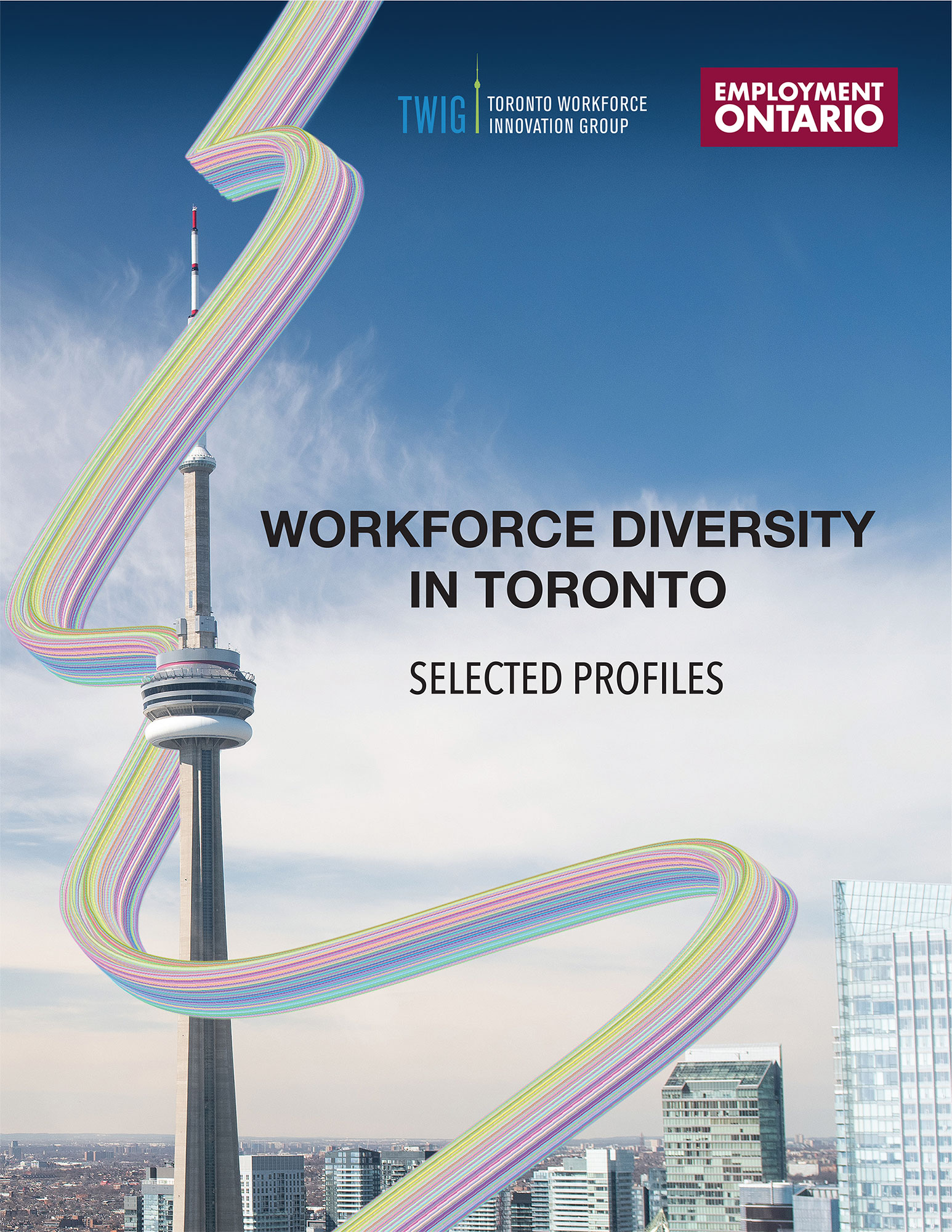
Toronto has the largest labour force in Canada, with one of the most educated and skilled workforces in North America. Our workers are an incredible asset in attracting new businesses and driving economic development. However, many workers in Toronto face systemic barriers to full workforce participation, preventing them from sharing in the City's prosperity.
TWIG’s Inclusion profiles derived from the 2021 Census, yield considerable information on the income, education, occupations, and sectors for each of the above groups. These profiles provide important information that has implications for workforce policymakers and practitioners who want to design better employment supports for groups facing barriers to employment and higher income in the City of Toronto.
Report in PDF Format
A Work in Progress: Towards $10 a day Child Care in Toronto.
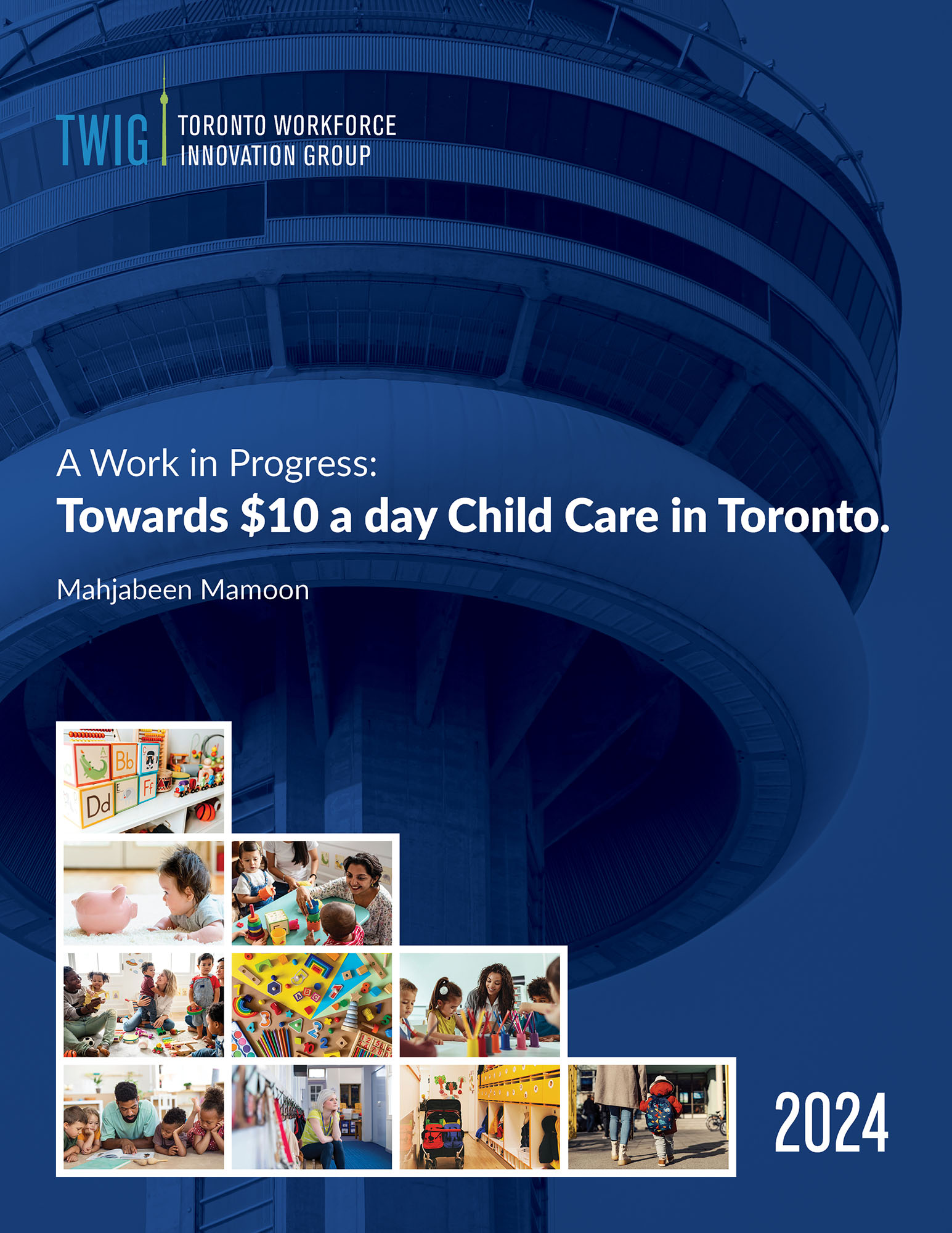
The signing of the Canada-Wide Early Learning and Child Care (CWELCC) agreement between the Province of Ontario and Federal Government in March 2022 provided a significant opportunity to make child care more accessible and affordable to families. The $10-a-day child care initiative has successfully lowered fees, increasing access for low and middle-income families and consequently raising demand. However, challenges persist. While Toronto has seen growth in child care spaces over the past two years, the availability is hindered by challenges in recruiting qualified staff. The report highlights disparities in child care access among communities, emphasizing the ongoing efforts required to enhance the effectiveness of the initiative. It acknowledges that the current state of the initiative is a work in progress.
Report in PDF Format
Toronto Labour Market Insights

Toronto’s downtown continues to recover since the stresses of the pandemic and in 2023 and as indicated in the recent City of Toronto Employer Survey, the downtown reported the highest employment count reported in the last five years at 601,010 jobs. Total employment in the city of Toronto in 2023 grew by 50,690 jobs (3.4 per cent) from 2022, compared to 33,080 jobs (2.3 per cent) growth between 2021 and 2022.
Report in PDF Format
Quality of Life, or Quality of Work? The Great Resignation in Ontario
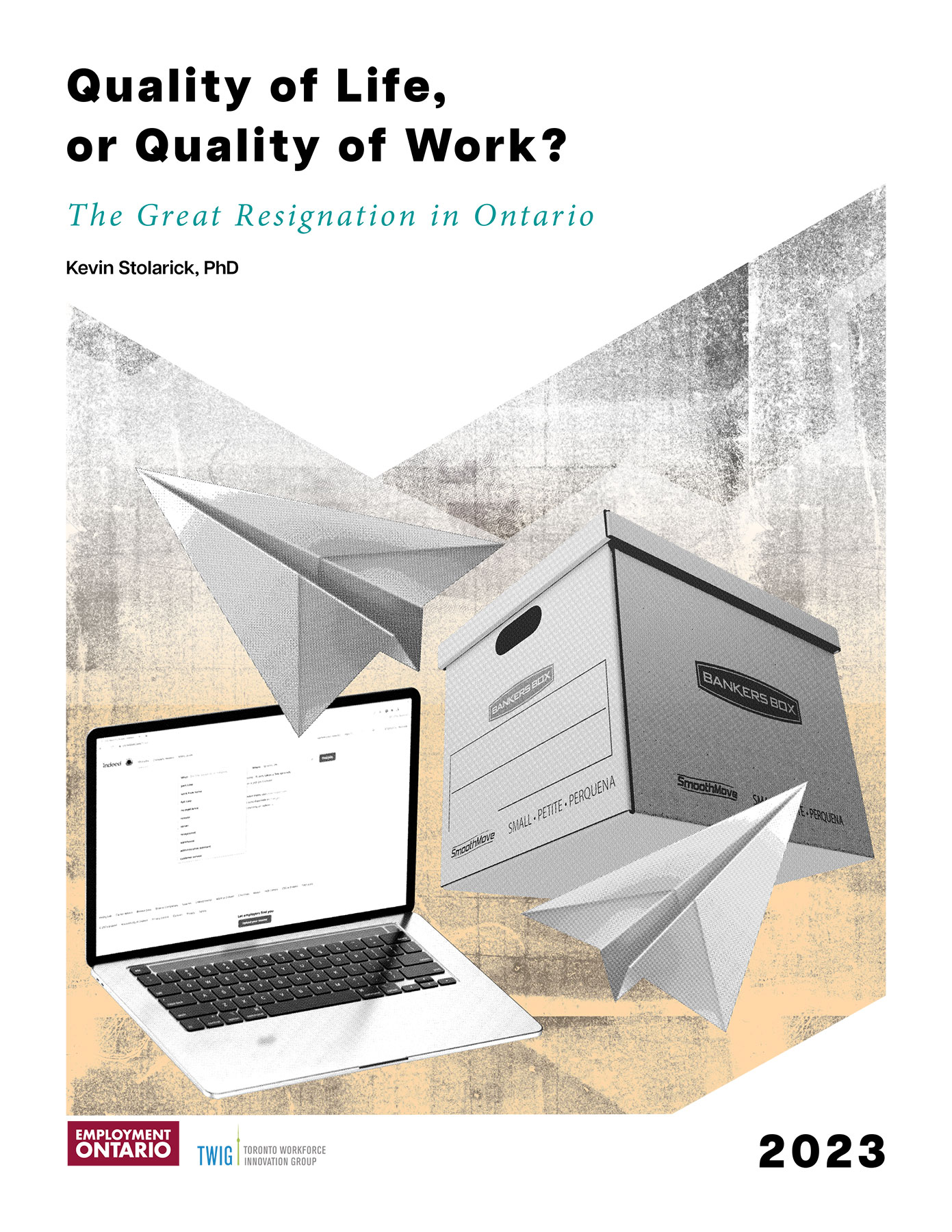
The Great Resignation is a phrase that describes record numbers of people leaving their jobs during and after the COVID-19 pandemic. Many labour market observers see the Great Resignation as a once-in-a-generation change to the way workers find a better work-life balance. Indeed, the Great Resignation is viewed by many as one of the major factors behind our ongoing labour shortages. While the Great Resignation remains an ongoing narrative, recently some U.S. studies have cast doubt on the nature and depth of the Great Resignation.
This paper, using Canadian Labour Force Survey (LFS) data, seeks to determine whether the phenomenon occurred in Ontario.
Report in PDF Format
Labour Market Insights

Metro Toronto Movement for Literacy and TWIG partnered in 2022-2023 to create a labour market tool that can be used not only by adult literacy and language programs but also their learners to find relevant and up-to-date information about the labor market, help with making informed decisions about employment, developing job search skills, preparing for the workplace, and customized learning. The tool was developed in consultation with adult learners and practitioners and includes real-time data on employment trends in Toronto, along with suggestions on how LMI can be used.
The LMI tool can be downloaded here, or you can access it at: https://www.mtml.ca/updates/labour-market-information/toronto-region. The Labour Market Information will be updated on a quarterly basis.
Report in PDF Format
Toronto Local Labour Market Plan and Insights

The COVID-19 pandemic created unprecedented socio-economic changes with major impact on international, national, provincial and local labour markets. Yet, despite the turmoil related to the local economy and its labour market, Toronto was remarkably resilient. Despite job record job losses caused by the negative impacts of the COVID-19 pandemic, over the past 12 months the Toronto economy added an additional 33,080 jobs with over 21,750 of these being full-time. The annual review is a process that starts with a review of the latest labour market trends observed internationally, nationally, provincially, and regionally.
Report in PDF Format
Toronto Then & Now: Census Infograhpics
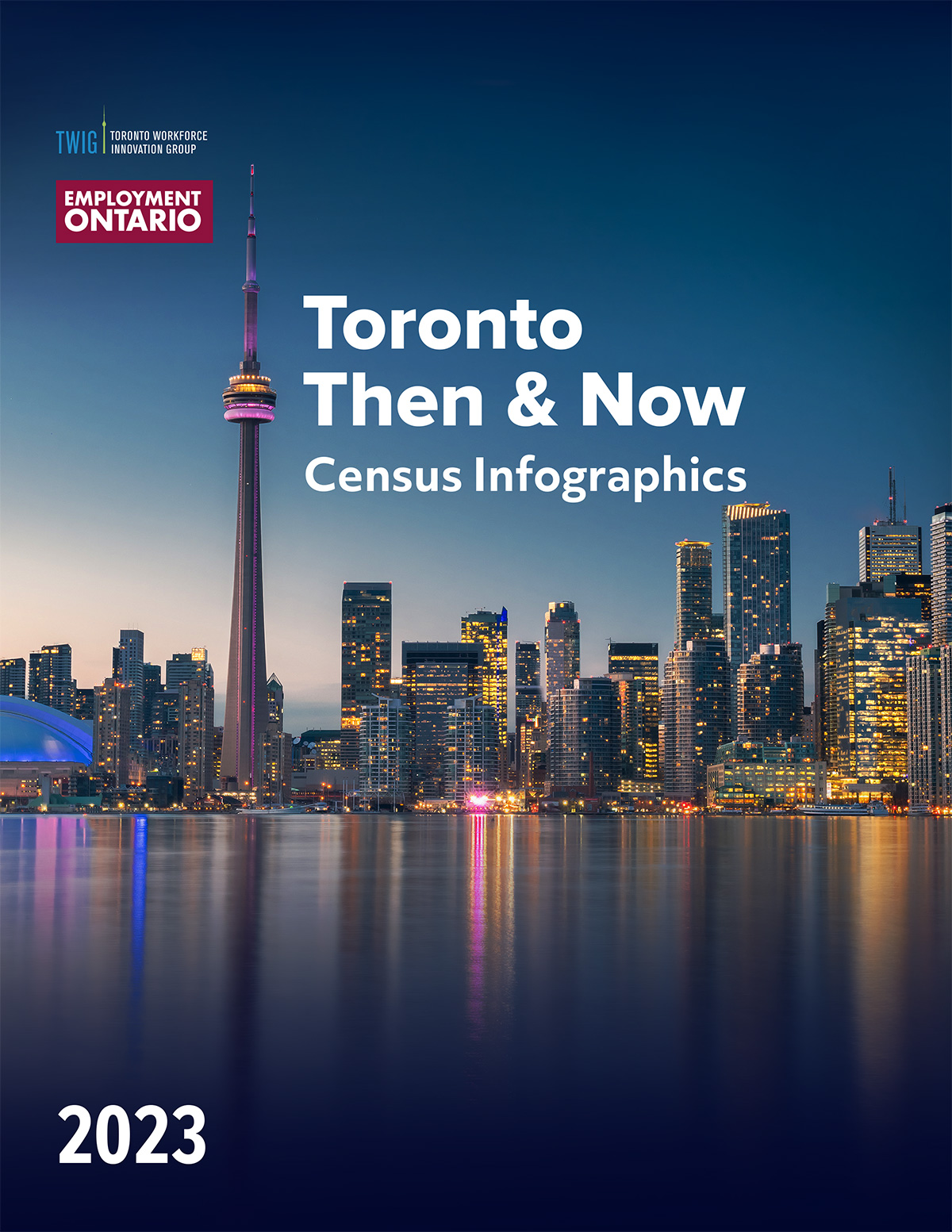
Every five years, Canadians are invited to participate in the census to help paint a portrait of Canada's diverse population and the places where we live. The Census of Population provides high-quality information on key socioeconomic trends and analysis that helps Ontario and the City of Toronto to make important decisions that affect our families, our neighbourhoods and our businesses.
This infographic celebrates the release of Toronto’s 2021 Census data by comparing our labour force of today with what it looked like 100 years ago.
Getting Results: Medical Laboratory Professionals and their Importance to Ontario’s Health Care System

The Medical Laboratory Professionals’ Association of Ontario (MLPAO) reported that Ontario itself conducts 280 million lab tests a year. Canada’s aging population is likely to cause increasing demand for medical testing over the next several decades. Among many other technical occupations in health, more Medical laboratory technologists (MLTs) and Medical laboratory assistants and related technical occupation (MLAs) will be needed to handle such larger volume of medical tests thereby ensuring a smooth functioning of the clinical laboratories.
Think Design Report
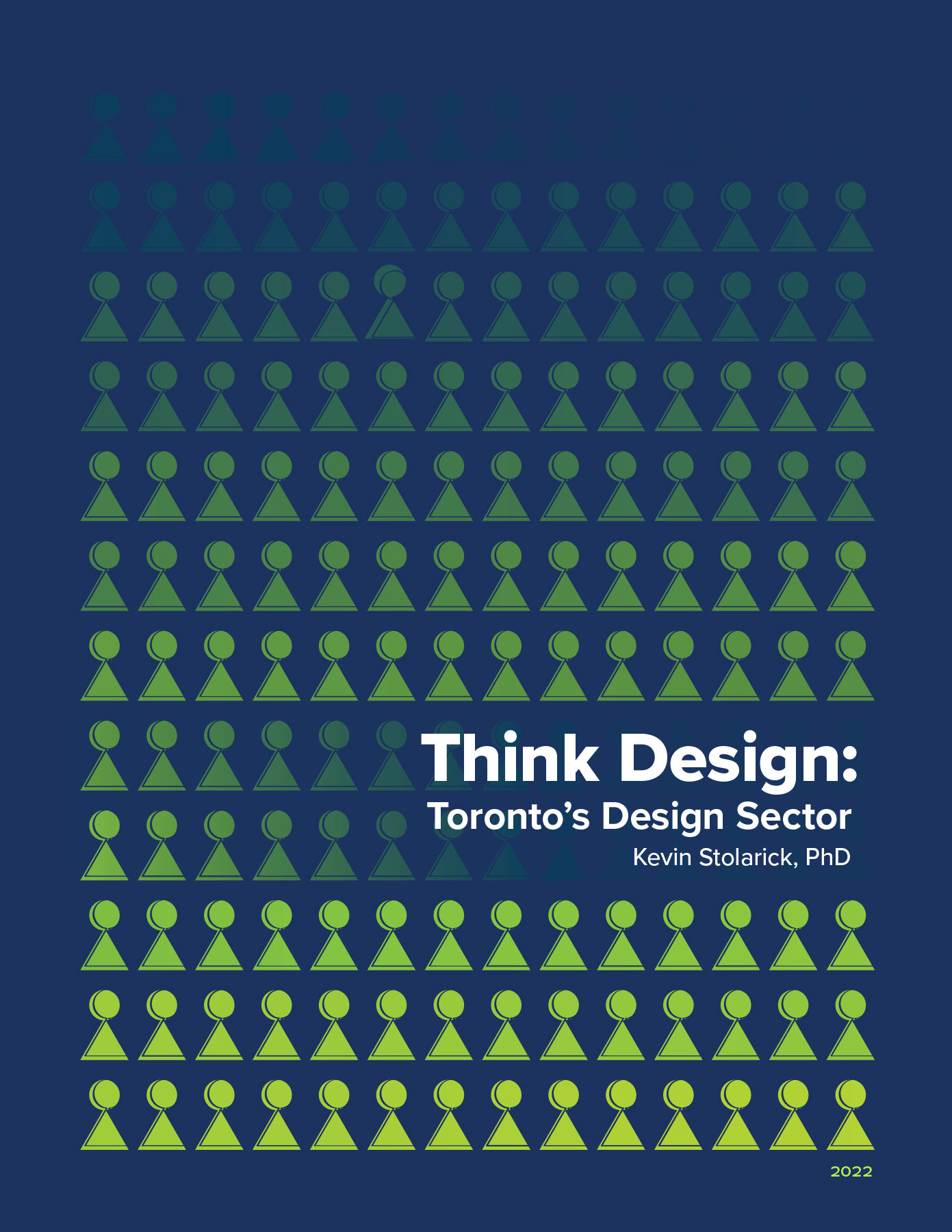
Design is recognized around the world as a key to economic and social prosperity. Toronto is well positioned to take advantage of the economic opportunity inherent in this current Design focus with a critical mass of designers working in the Design disciplines of architecture, landscape architecture, industrial, interior, graphic, fashion, planning and urban design.
Written by Kevin Stolarick, this TWIG report provides an in-depth qualitative and quantitative overview of design occupations and industry sectors. The report also provides labour market insights on how Toronto’s design sector can continue to thrive over the coming decade.
Rethinking Employment and Training

It has now been over two years since the start of the COVID-19 global pandemic that has changed the way we navigate our lives. Intermittent lockdowns and social distancing measures have led to a more virtual existence at both work places and home. The pandemic forced businesses and public services across Ontario into a balancing act – protecting the health and safety of their employees and customers while simultaneously continuing their operations. This report highlights the lessons that have been learnt in the process and how this could be applied in a post pandemic world of learning and training.
Microcredentials

Most of us have heard of Degrees, Diplomas and Certificates. These pieces of paper acknowledge knowledge and achievement in a subject. In some cases, they’ve been around for centuries and they usually have some currency with academic institutions, industry and employers. But what does this new term “microcredntials” mean? The term is popping up everywhere these days.
Microcredentials are small blocks of learning. Smaller than a degree or a diploma that you’d get from a college or a university. They’ve actually been around for years and years, though they weren’t called “microcredentials” until now.
They’re used for lots of things. One important purpose is to show that a person has a very specific skill and/or knowledge that is important to do a job.
Opportunities and Occupations in Toronto’s Film, Television and Digital Media Industry

Not too long ago, a parent would likely be concerned if their teenager indicated they were interested in a career in film or television. Now, they need not worry. Toronto’s film, television and digital media industry offers significant economic benefits for those choosing to make it a career. Career education and training programs are provided by industry (unions, guilds, industry associations and not-for-profit organizations, festivals, training institutions and the private sector), community colleges, and increasingly, initiatives with community organizations not traditionally associated with the sector. Most of these occupations pay decent wages and provide opportunities to advance.
Local Labour Market Planning Report 2019-2020
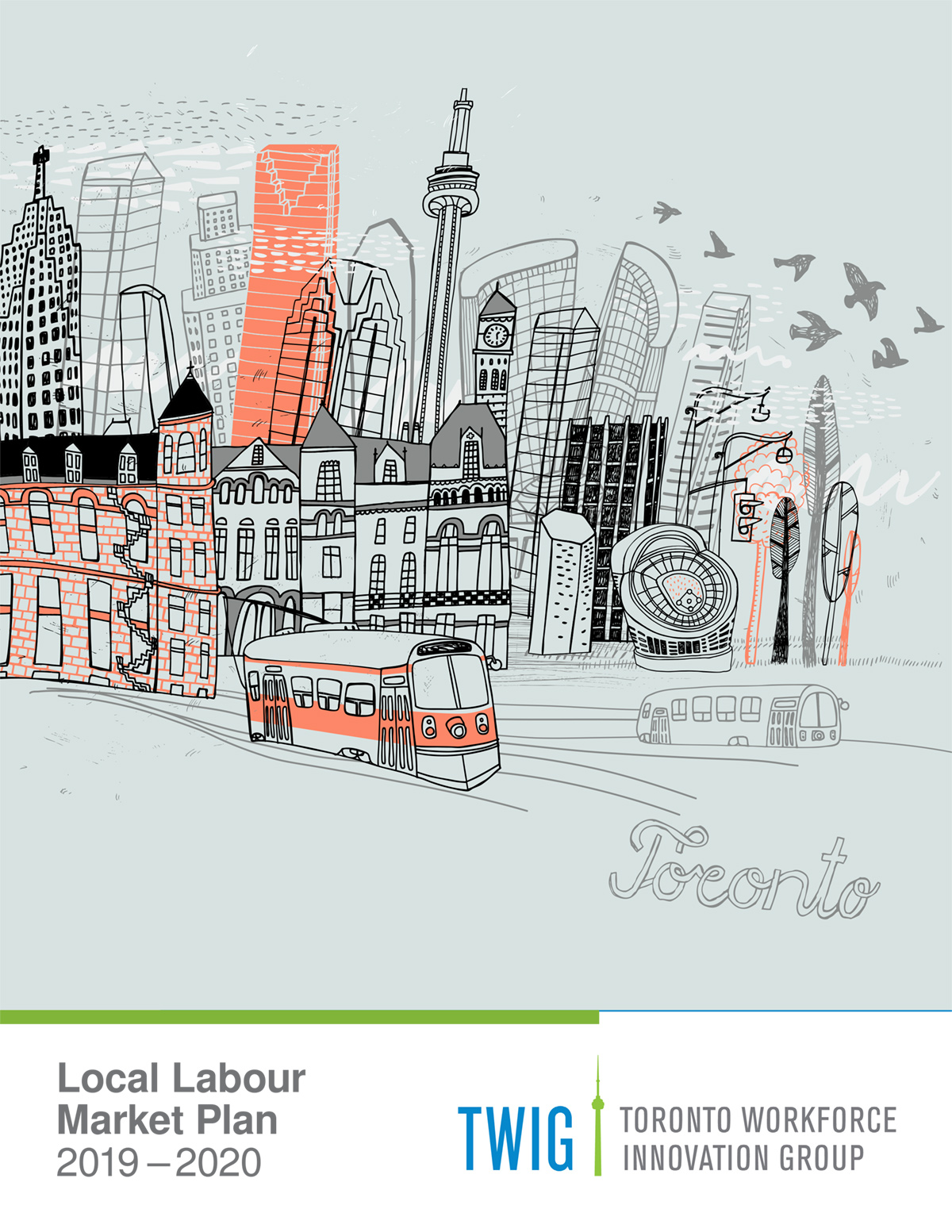
Report in PDF Format
Pathways for Mobility

Report in PDF Format
Warehousing and Distribution Industry
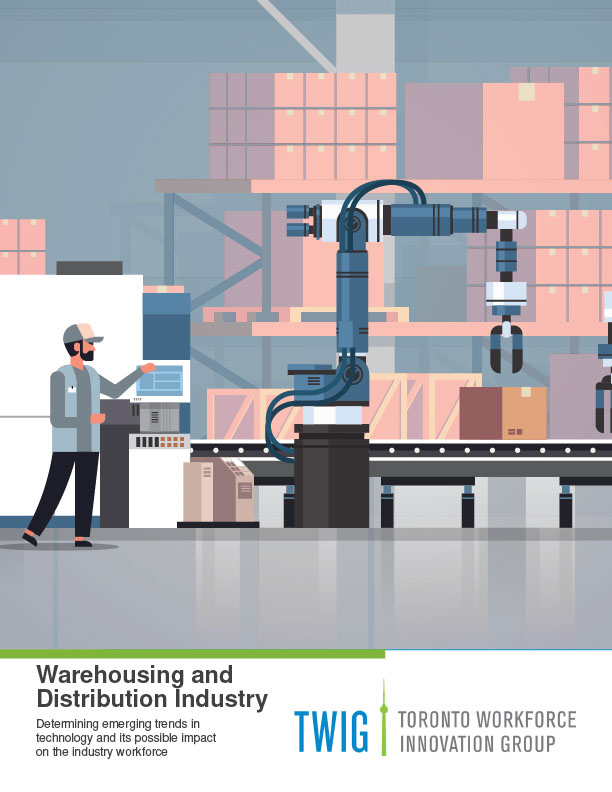
Report in PDF Format
Beyond the GTA: Making immigration work for all of Ontario
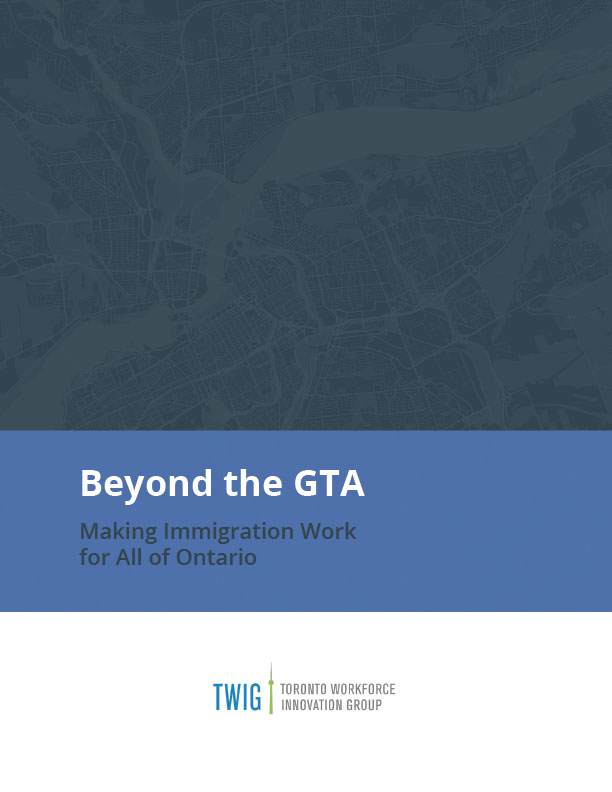
Report in PDF Format
Local Labour Market Planning Report 2018-2019 - English
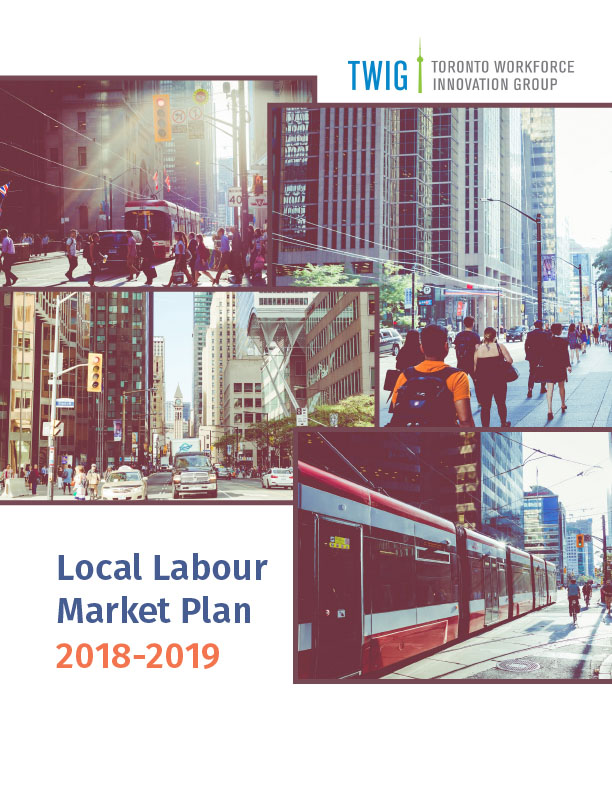
Report in PDF Format
Rapport de planification pour le marché du travail local 2018-2019
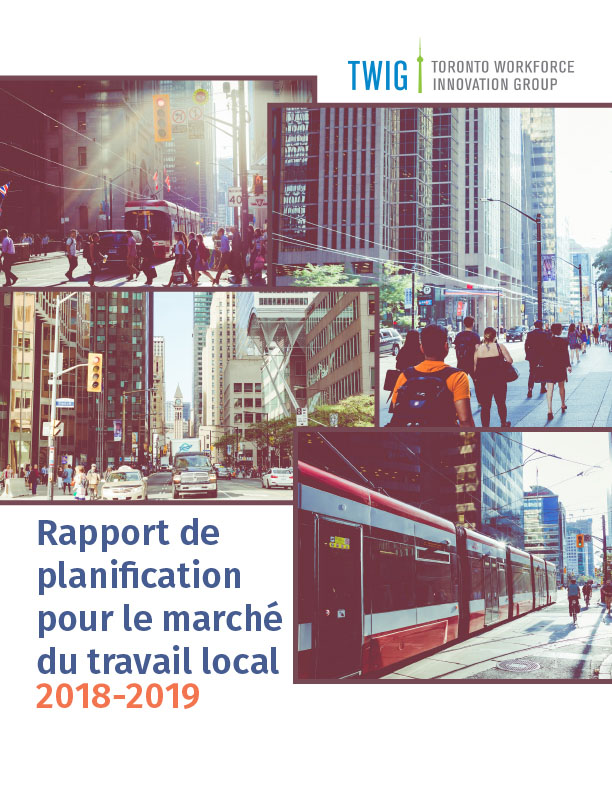
Report in PDF Format
Finding the Right Ingredients: Labour Market Considerations for Toronto's Food and Beverage Processing Sector

- Toronto’s food and beverage processing sector employs more than 62,000 people and is the third largest food processing sector in North America.
- Small companies and entrepreneurs have experienced considerable growth over the last decade.
- The sector is now a bigger employer than auto manufacturing both in Toronto and Ontario as a whole.
Report in PDF Format
Stemming the Gray Tide

Report in PDF Format
What Would it Take? A longitudinal study of the long-term unemployed in Toronto
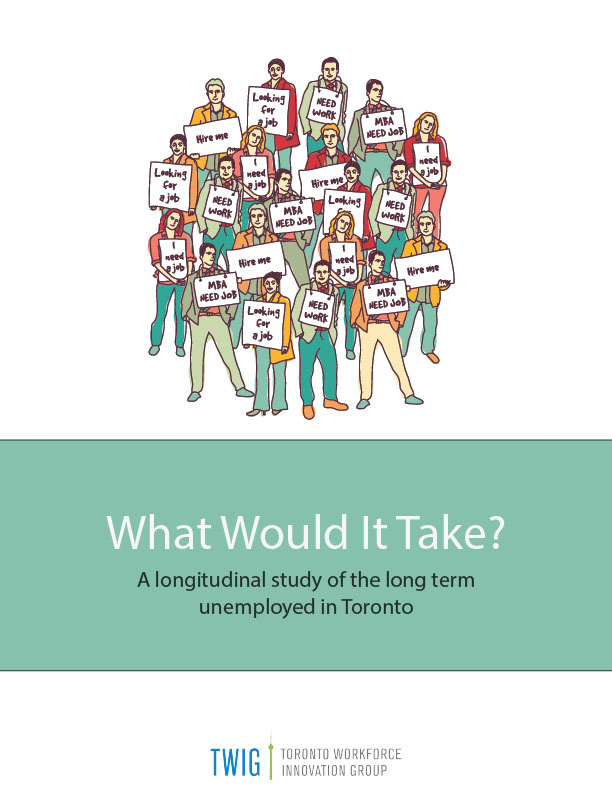
Report in PDF Format
Putting the Ingredients Together: Connecting Employers and Workers in Toronto's Food and Beverage Manufacturing Industry
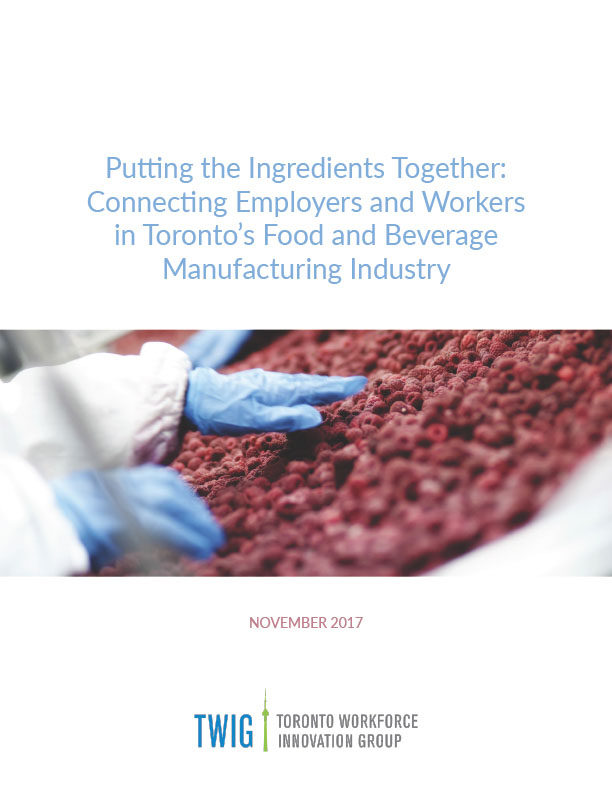
Report in PDF Format
Supporting Economic Mobility through Toronto’s Employment and Training System
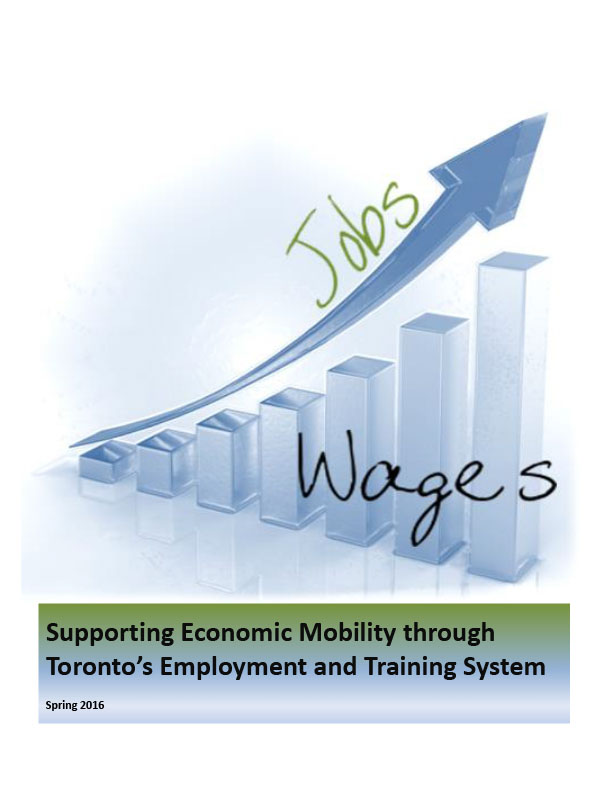
Report in PDF Format
95 Months Later: Turbulent times in Toronto’s Labour Market
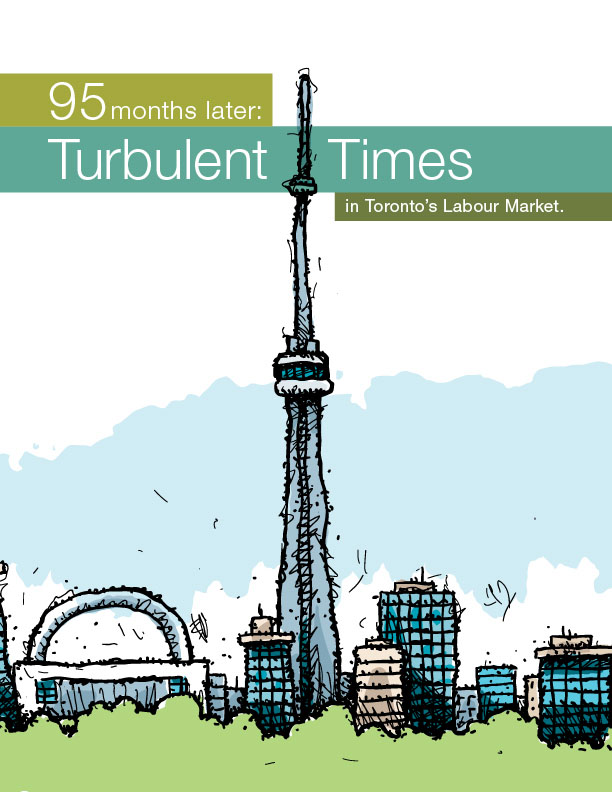
Report in PDF Format
Constructing Toronto

Report in PDF Format
The accuracy of the information presented based on job posting data depends, in part, on whether jobs are categorized into the correct industries. In some cases, job postings may be incorrectly attributed to a sector grouping and the data should be interpreted with caution.
All industry and occupational data is for Toronto Census Municipal Area (Toronto CMA) unless noted.
We welcome the use and sharing of the research data contained in our reports, articles and website, with attribution to “Toronto Workforce Innovation Group (TWIG)” as your source.
